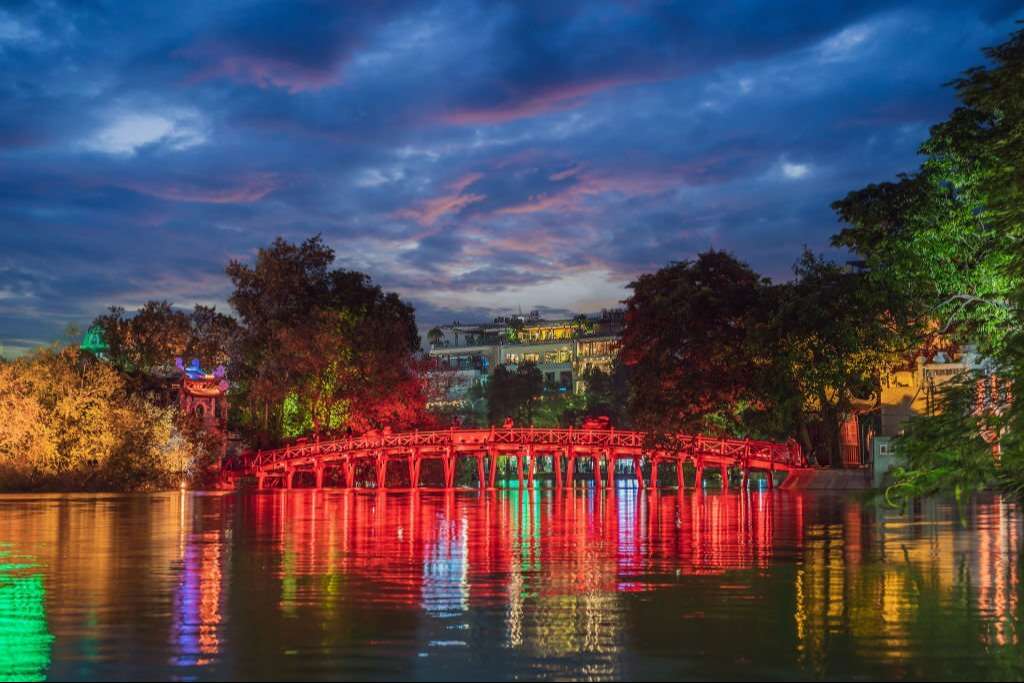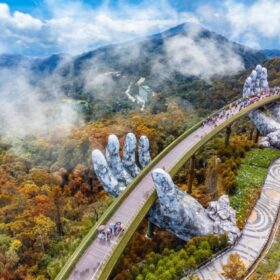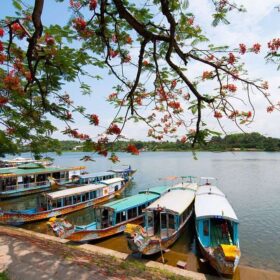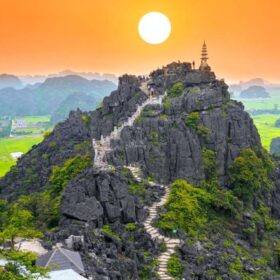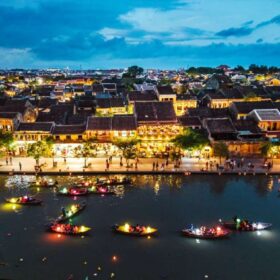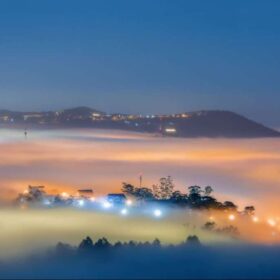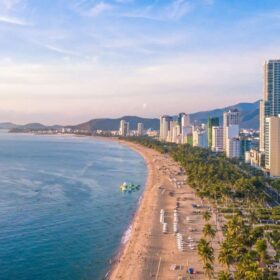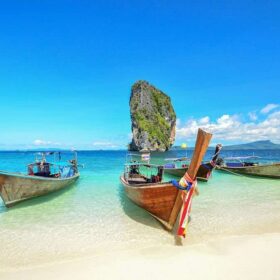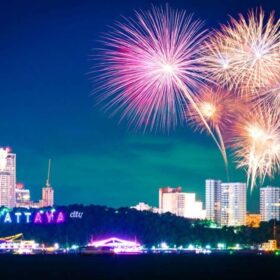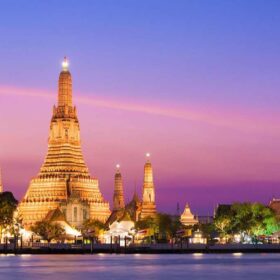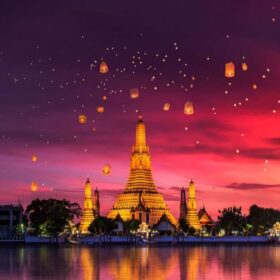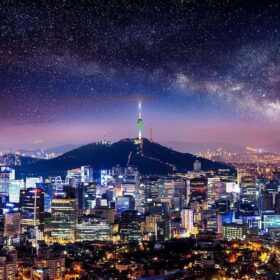Hanoi, known as Vietnam’s capital, is also recognized as one of the world’s ancient cities. Immerse yourself in the rich tapestry of ancient history that surrounds you, a captivating journey that sometimes gets overlooked amidst the allure of the late 20th century.
Travel back in time to the 6th century as you explore the enchanting temples and ancient citadels. But as you travel, you notice Chinese and French colonial architecture. It is visually appealing and transports you to a different destination.
Similar to exploring Vietnam, embarking on a journey through the vibrant city of Hanoi offers a fast-paced and exhilarating travel experience. As I explore the bustling streets, the air is filled with the constant symphony of horns echoing from countless scooters. Every traveler communicates and determines priority more than a set of traffic lights. Embarking on a journey through the streets of Hanoi by foot is a thrilling travel experience, where every corner reveals bustling markets filled with exquisite traditional crafts and the enticing scents of delectable local dishes.
Travelers are captivated by the enchanting fusion of Eastern and Western influences found in Hanoi. Travel to this destination promises an enchanting fusion of Asian Pagodas, communist block buildings, and French Colonial relics. Moreover, it boasts a plethora of exciting and one-of-a-kind tourist attractions, perfect for the intrepid explorer.
Hoan Kiem Lake
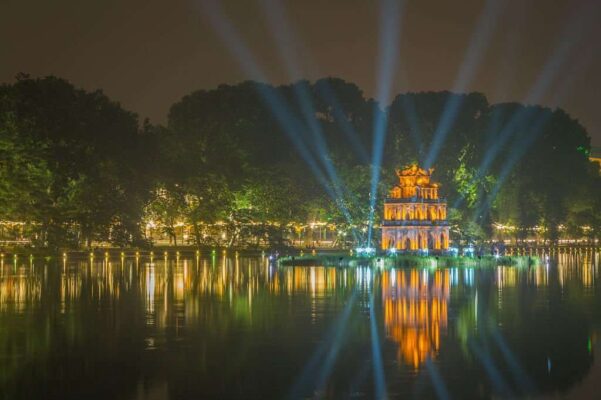
One of the most famous attractions in Hanoi is the serene Hoan Kiem Lake, located on the southern outskirts of the historic old town district.
One of the must-visit destinations in the area is the picturesque lake, with a charming small island that can be reached by crossing a vibrant red bridge. This island is home to Ngoc Son Temple, a place of great significance in Vietnamese history. Inside the temple, you will find reverence for three prominent figures. The first is La To, who is highly regarded as a patron saint of physicians. The second is Van Xuong, a renowned scholar who has left a lasting impact. Lastly, there is Tran Hung Dao, a heroic general from the 13th century who valiantly fought against the invading Mongol army.
Located in the southern section of the lake, there is a charming little island that is perfect for travel enthusiasts. This island is home to the magnificent Turtle Tower, a remarkable sight that can be best appreciated from the nearby bridge.
Hanoi’s Old Quarter
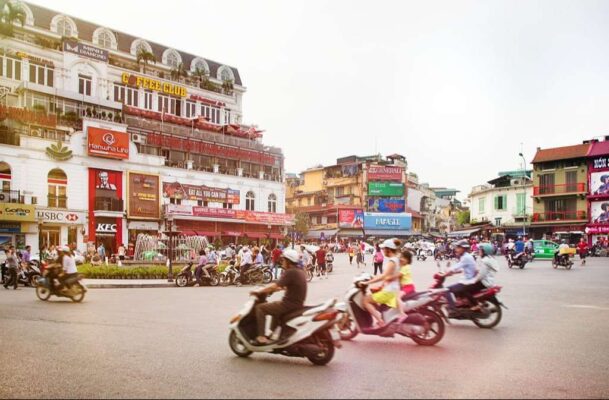
Within the Ba Dinh district, the vibrant Old Quarter is a bustling hub of activity. The excitement envelops you as you embark on a thrilling journey, instead of being a sensory overload. As you journey, the bustling streets of the city will envelop you, creating a vibrant atmosphere filled with the noisy hum of conversations.
The Old Quarter is a charming blend of colonial French architecture, adorning the streets filled with locals donning straw hats and peddling a variety of foods and goods. Here, color and cuisine intertwine seamlessly, painting the quarter in a kaleidoscope of hues and tempting your senses with endless culinary delights.
Travelers who love exploring culinary delights will find Hanoi’s Old Quarter to be a paradise. But also, anyone keen to explore the vibrant energy of the city’s oldest commercial district.
Temple of Literature
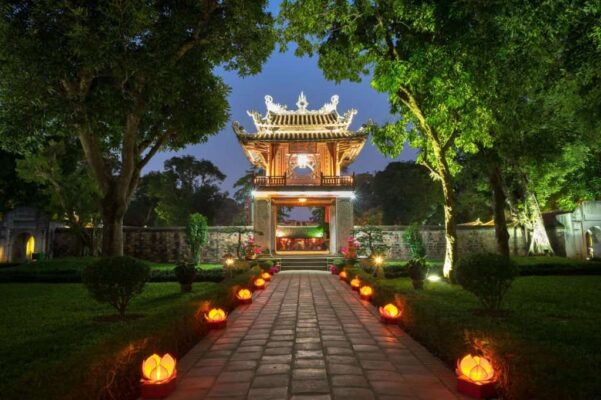
This is one of the magnificent temples of Confucius, which also happens to be the proud residence of the nation’s inaugural university. Originally constructed in 1070, this magnificent temple serves as a tribute to scholars from all walks of life.
Today, travelers will gather at the steps of a majestic temple during the Asian New Year to witness calligraphists skillfully crafting goodwill wishes in Han characters. These beautifully written messages will be cherished as precious gifts, adding an enchanting touch to the festive atmosphere. The travel destination is a temple that was constructed to resemble Confucius’ birthplace. It boasts five courtyards and a multitude of temples and other structures spread across its vast premises.
While traveling, it is worth mentioning the Stelae of Doctors, a remarkable collection of more than 100 intricately carved blue stone turtles. These magnificent sculptures pay tribute to the individuals who successfully completed the royal exams by inscribing their names upon them.
Vietnam Museum of Ethnology
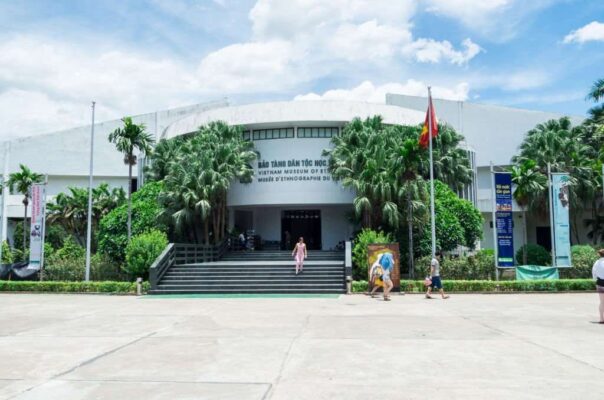
Traveling through its connection to neighboring countries and Vietnam’s colonial past, the Southeast Asian country offers a rich tapestry of diversity. Experience the vibrant tapestry of Vietnam’s diverse subcultures and their rich heritage as you immerse yourself in the captivating exhibits of the Vietnam Museum of Ethnology.
Vietnam boasts more than 50 indigenous communities, offering a rich cultural tapestry to explore during your travels. Many of them are working side by side with this insightful museum to preserve and celebrate centuries of stories and unique cultures.
When visiting the Vietnam Museum of Ethnology, you will be immersed in an authentic cultural experience like no other. The adventurous journey has led to a diverse array of destinations, from ancient ruins to exotic landscapes. If you’re seeking to embark on a journey beyond the vibrant culture of modern Vietnam, this destination is the ideal choice for you.
Ho Chi Minh Mausoleum
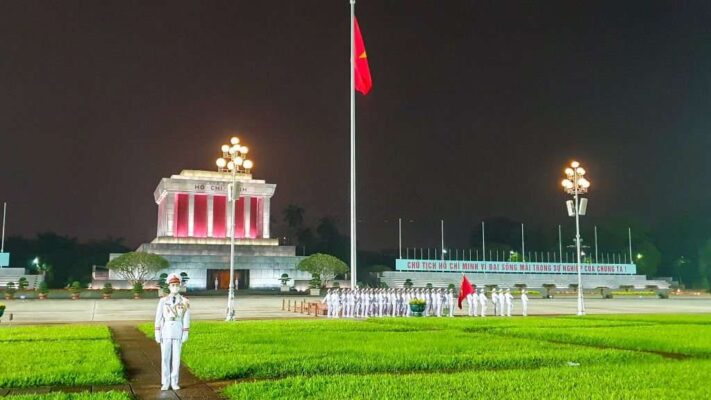
Ba Dinh Square is home to the final resting place of Ho Chi Minh, a prominent Vietnamese communist leader. This historical site holds great significance as it was the very spot where Ho Chi Minh proclaimed the nation’s declaration of independence back in 1945.
Located in the heart of the city, this impressive architectural marvel draws inspiration from Lenin’s crypt in Moscow. Designed to resemble a traditional communal house, it stands tall with its blocky structure and prominent pillars. While some visitors may perceive it as a concrete cubicle adorned with columns, it remains a fascinating sight for tourists to explore.
Contrary to his desire for a relaxing vacation, the picturesque destination offers a wide range of activities to explore. Visitors can admire the stunning views while adhering to the dress code of comfortable attire. During the end of the year, the mausoleum undergoes a temporary closure for a few months.
Ho Chi Minh Museum
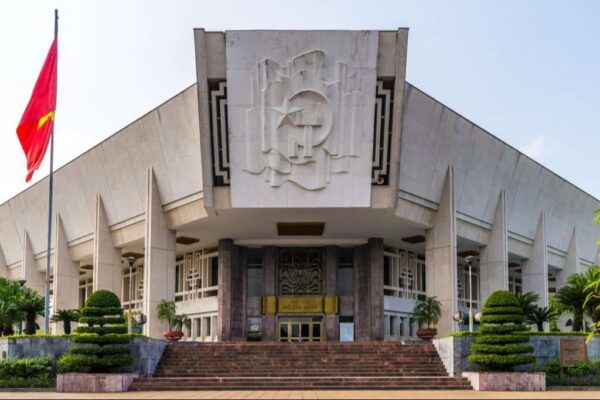
Next to the Ho Chi Minh Mausoleum, the Ho Chi Minh Museum delves into the life and influence of Vietnam’s most prominent historical figure. Few individuals have had a more profound impact on modern-day Vietnam than Uncle Ho, so gaining insight into his life is instrumental in understanding the country’s history.
Inside the museum, visitors can explore exhibits showcasing his personal belongings, his formative years, and the events that led to his rise to power. In addition to the artifacts, the museum offers various films that provide a more in-depth look at the era, offering both audio and visual components to enhance the experience.
Hoa Lo Prison
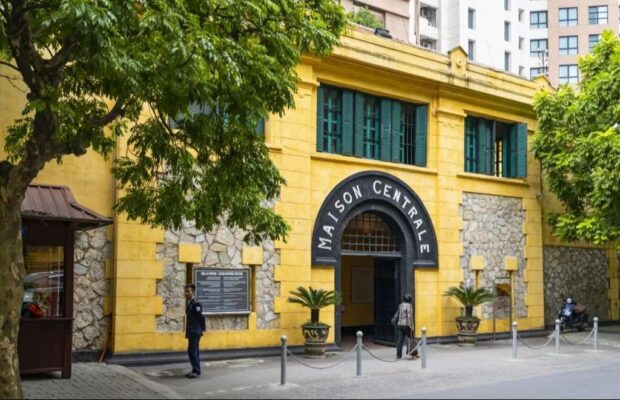
The Hoa Lo Prison, affectionately referred to as the Hanoi Hilton by American POWs, stands as a historical landmark. Originally constructed by the French, this remarkable structure was intended to serve as a confinement facility for Vietnamese political prisoners. The North Vietnamese Army made use of the prison to accommodate prisoners of war throughout the duration of the Vietnam War.
Senator John McCain, James Stockdale, and Bud Day were just a handful of the numerous prisoners of war that spent time in this prison.
To accommodate the Hanoi Towers, two-thirds of the prison was demolished, while the remaining portion was transformed into a museum, becoming a popular tourist attraction in Hanoi. In 1999, a Hilton Hotel was established in Hanoi, with the deliberate name of the Hilton Hanoi Opera Hotel.
Thang Long Water Puppet Theater
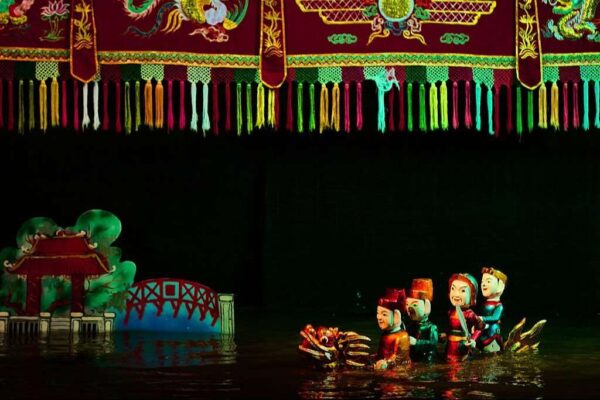
This theater honors a peasant art style that developed over a thousand years ago in the rice terraces. Puppets were easily carved, and puppeteers would stand in the water of the paddies, acting out traditional tasks like as farming or stories such as the golden turtle and the emperor.
The use of water and audience interaction is maintained in the more current rendition. Traditional Vietnamese instruments will be used to produce an opera narrating the movements of the puppets, and musicians will interact with the puppets, supporting the heroes and warning them of oncoming peril.
Rather of braving the monsoon rain that traditionally pelted outside audiences, visitors to the theater may relax and enjoy a meal while learning about this old dramatic art.
Hanoi Opera House
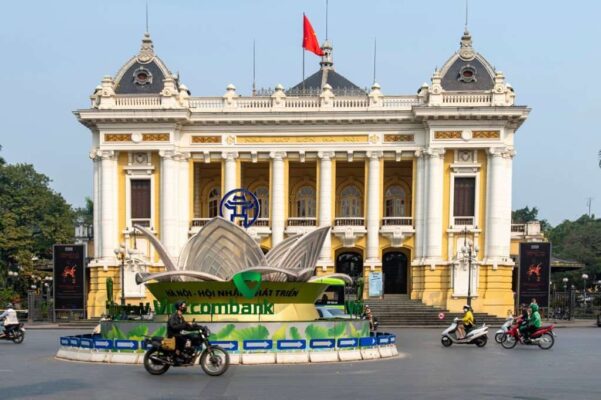
Originally constructed during the French colonial era, the Hanoi Opera House has experienced a modern revitalization. Following its renovation in 1997, the Hanoi Opera House has emerged as a focal point of the city’s vibrant arts and culture scene.
Inspired by the Paris Opera House, this magnificent building is located in Hanoi’s French Quarter. From the street, you can step back and admire one of Hanoi’s most exquisite examples of colonial architecture, featuring an elegant facade adorned with white columns that harmoniously complement the cream-colored walls.
With a steady stream of events, visitors can unveil the cultural richness and partake in evenings filled with Vietnamese opera, regional dance, ballet, and live music.
Vietnam Military History Museum
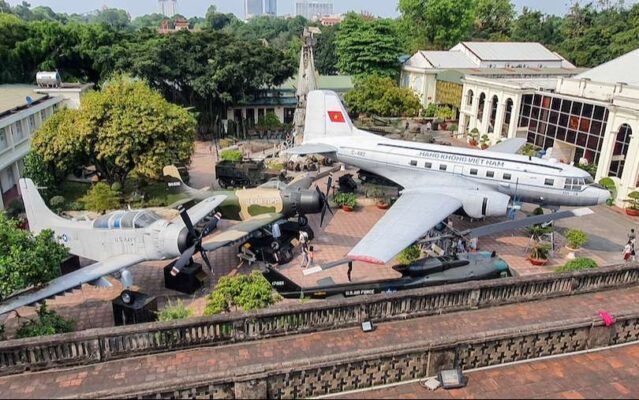
While the events of the Vietnam War are undeniably tragic, this era played a pivotal role in shaping the country throughout the 20th and 21st centuries. For travelers, exploring this crucial part of the nation’s history is highly significant, and the Vietnam Military History Museum offers an excellent opportunity to do so.
Visitors coming from overseas, especially Western countries, will find the museum’s unique perspective quite enlightening. The Military History Museum examines the war, including conflicts with the French, from a local viewpoint. Combining this with your own understanding of these historical events provides a comprehensive insight.
The exhibits at the museum are powerful and emotionally impactful. In addition to firsthand accounts, you can view a detailed model of the renowned Cu Chi Tunnels, various fighter planes, and the remnants of a B52 Bomber.
St. Joseph’s Cathedral
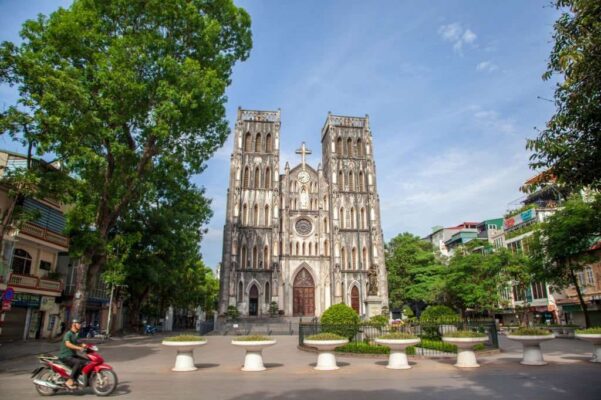
Located between the Hoan Kiem Lake and Hanoi’s Old Quarter, St. Joseph’s Cathedral stands as an architectural masterpiece. This neo-Gothic structure, constructed in 1886, draws inspiration from the Notre Dame Cathedral in Paris.
Over the decades, it has become an iconic part of the city’s skyline, despite serving only a small community of Vietnamese Catholics. As the oldest church in Hanoi, St. Joseph’s Cathedral enjoys popularity not only among worshippers but also among tourists.
Travelers who visit the cathedral will often see fellow international visitors capturing selfies with its stunning facade, featuring twin towers flanking a prominent cross. Surrounding the cathedral are well-manicured gardens and trees that provide a peaceful retreat from Hanoi’s scorching sun.
One Pillar Pagoda
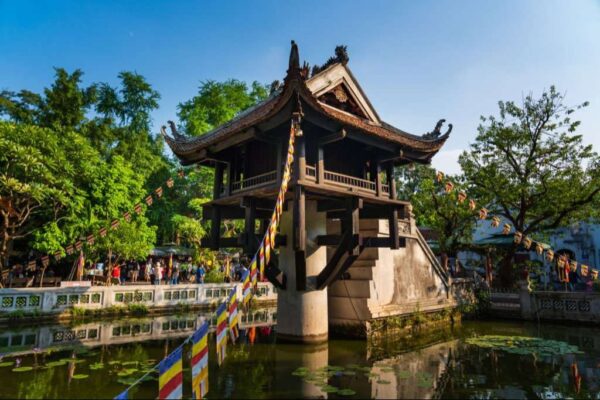
If Buddhists were to construct a treehouse, it might closely resemble this one. This temple, dating back to the eleventh century, was commissioned by the emperor as an expression of gratitude upon finally receiving a son.
The temple’s design was intended to mimic a lotus flower emerging from a single pillar in a pond, reminiscent of the prophetic dream that foretold the birth of the emperor’s child.
Within the temple, there resides a small shrine dedicated to the Bodhisattva of Mercy. It’s important to note that the current structure is a reconstruction, as the original temple was destroyed by the French during their withdrawal from the country.
Thang Long Imperial Citadel
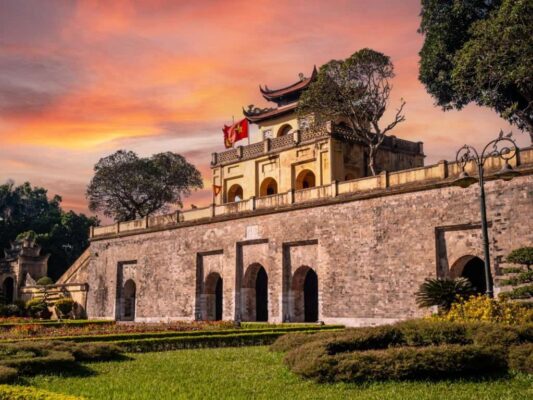
With a history spanning over two thousand years, Hanoi has a rich and enduring tale to share, and at the heart of it lies the Thang Long Imperial Citadel—a historical site that has been exceptionally well-preserved.
A UNESCO World Cultural Heritage Site, the Imperial Citadel showcases the distinctive characteristics of historical architecture intertwined with evident cultural influences.
Preceding the city itself in age, the origins of Thang Long Imperial Citadel traced back to the 7th century. Initially established as a Chinese fortress, it later evolved into the nation’s capital, maintaining its significance in Vietnam’s political and cultural history.
Today, visitors have the opportunity to explore this historic citadel, discovering its iconic gates, towers, and palaces that once served as residences and centers of power for royalty.
Vietnamese Women’s Museum
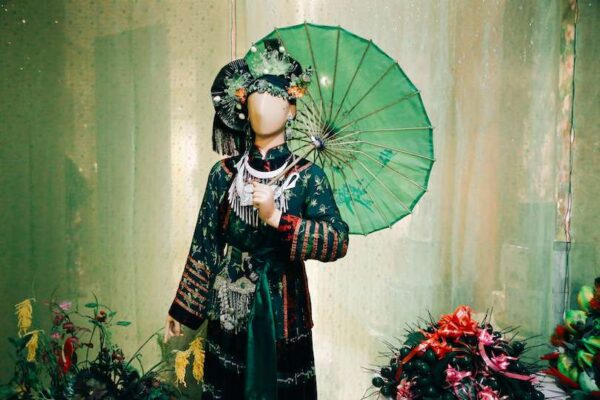
A short journey from the Hanoi Opera House will lead you to the entrance of the Vietnamese Women’s Museum. While its central focus is on the narrative of women throughout Vietnamese history, this museum is decidedly contemporary in its approach.
Thanks to the diligent efforts of the Women’s Union of Vietnam, this museum adeptly portrays the diverse roles, movements, and challenges that have shaped the lives of women in Vietnam, all presented in a vibrant and engaging manner.
Visitors can delve into the evolving lifestyles across the centuries, from their roles as merchants to modern-day entrepreneurs, as well as their pivotal contributions during international conflicts. In addition to their professional pursuits, the museum also offers insights into the everyday aspects of Vietnamese culture, including fashion and motherhood.
Visit the Perfume Pagoda
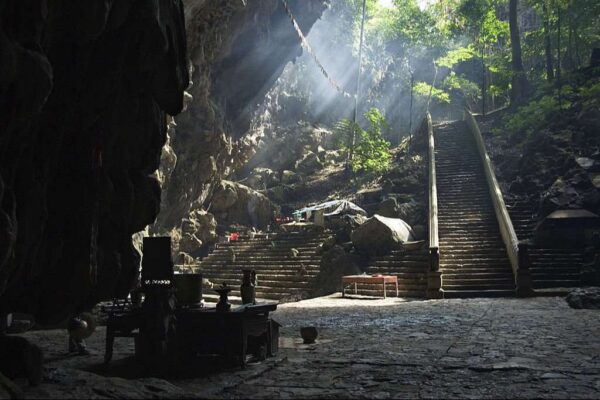
A wonderful way to escape the bustling and sometimes tiring atmosphere of downtown Hanoi is to embark on a day trip to the Perfume Pagoda. Situated approximately 60km (37 miles) from Hanoi, this enchanting destination transports you from the city’s skyscrapers into an expansive countryside that stretches as far as the eye can see.
Surrounded by breathtaking natural beauty, the Perfume Pagoda still requires your attention and some physical effort. Following the drive, you’ll embark on a boat journey across a serene lake, followed by an uphill trek.
The Perfume Pagoda has historically been a magnet for pilgrims, and its intricate Buddhist temples, integrated into the limestone cliffs, have made it a must-visit attraction. These temples are intricately arranged in a labyrinthine fashion, with glistening stalactites hanging from the cave’s ceilings and adorned with beautiful Buddhist statues along the pathway.
West Lake
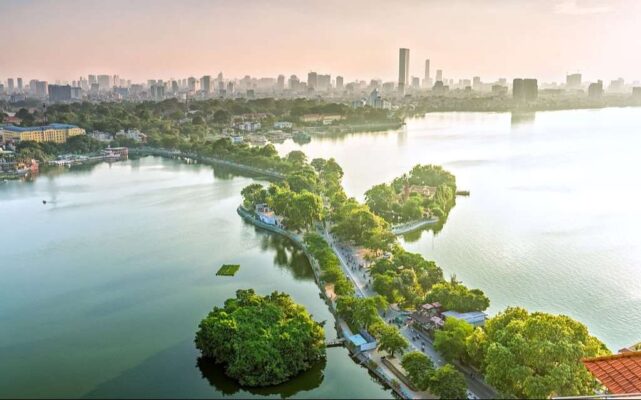
In the northwest of Hanoi, you’ll find West Lake, the city’s largest body of water. In the early morning, the gentle light dances across the serene lake, reflecting off the nearby buildings and creating a mesmerizing spectacle in the surrounding trees. It’s a truly enchanting place to be, especially before the sun reaches its zenith and you begin to seek refuge in the shade.
Encircling this expansive lake are natural trails that lead to breathtaking vistas and Tran Quoc Pagoda, Hanoi’s oldest Buddhist temple. Standing at a height of 15 meters (45 feet), it rests on the water’s edge and offers free entry, although it’s advisable to cover your shoulders as a sign of respect.
Vietnam is renowned for its excellent coffee, readily available at various points around West Lake. One of the most delightful activities in Hanoi is to start your day early with a cup of coffee in hand and explore this tranquil green oasis.
Bat Trang Ceramic Village
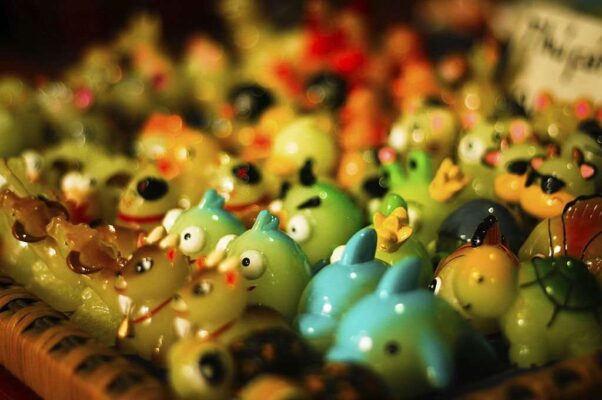
Located southeast of Hanoi, Bat Trang Ceramic Village offers a valuable glimpse into traditional Vietnamese culture. The history of ceramic exports in Vietnam dates back to the 13th century, and within this village, you’ll witness the remarkable expertise that has evolved over the centuries.
Amidst an array of pottery, including pots, cups, plates, artwork, and jewelry, a visit to Bat Trang Ceramic Village can quickly turn into a delightful retail therapy session. You’ll find yourself alongside locals as you browse through the merchandise, contemplating which items you might want to sneak into your own luggage.
Beyond shopping and observing the local artisans at work, partaking in a pottery class is a must-do activity here. After all, why not learn from the masters?
Fine Arts Museum
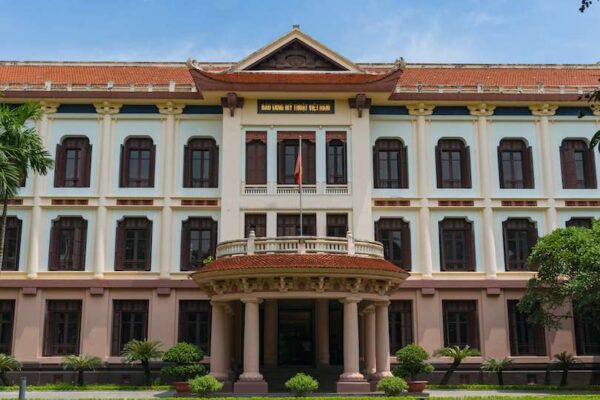
Occupying two buildings within the historic French Ministry of Information, the Fine Arts Museum houses an impressive and diverse collection of art from around the world. With contributions from both local and international artists, this museum provides an opportunity to satisfy your artistic cravings while gaining insights into Vietnamese artistry.
Referred to as Bao Tang My Thuat, the museum features an opulent European gallery showcasing masterpieces by Monet, Matisse, and Degas. However, a deeper exploration will lead you into the evocative and thought-provoking realm of Vietnamese art. From valuable national treasures to artifacts dating back to prehistoric times, the museum offers another perspective through which to connect with the culture of your destination.
The Fine Arts Museum welcomes visitors every day of the week, except for Mondays.
Train Street
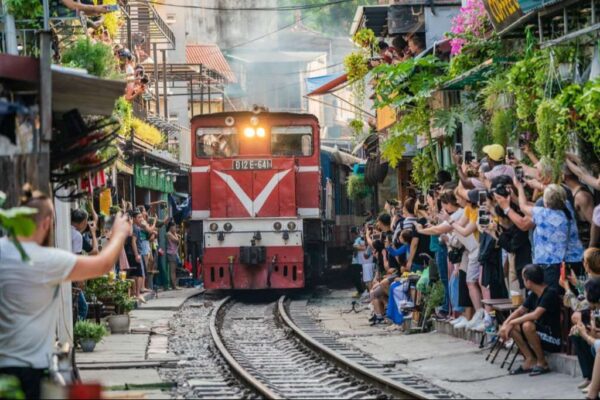
You have probably seen the photos and watched the videos. Hanoi’s Train Street has become a must-visit for travelers exploring the Vietnamese capital. Train Street, officially known as Tran Phu Road, is situated in the Old Quarter and features a train track running through a narrow corridor between buildings. Locals caught on to the fascination and started serving drinks and snacks at tiny tables, allowing both locals and travelers to capture unique moments.
However, due to safety concerns, this practice was halted in 2019. Nevertheless, as with other parts of Hanoi (like Ta Hien Beer Street), you may still encounter locals bending the rules. It is advisable to visit when there are no scheduled trains to safely enjoy this distinctive experience.
Dong Xuan Market
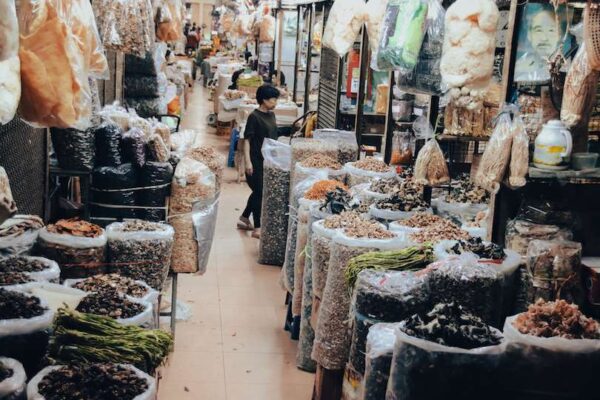
Experience local shopping alongside the locals at Dong Xuan Market. It’s a sprawling and sometimes overwhelming place, and it may take a moment to orient yourself amidst the vast array of fashion and goods.
Situated on the outskirts of Hanoi’s Old Quarter, Dong Xuan Market consists of a labyrinth of narrow alleys filled with stalls. Whether you’re in search of electronics or souvenirs, you’re likely to find what you need here. In addition to items geared towards travelers, you’ll also discover traditional Vietnamese clothing and artisan crafts.
The market spans multiple floors, but to access them, you’ll need to navigate through the bustling fish market section of the building.
Vietnam National Museum Of History
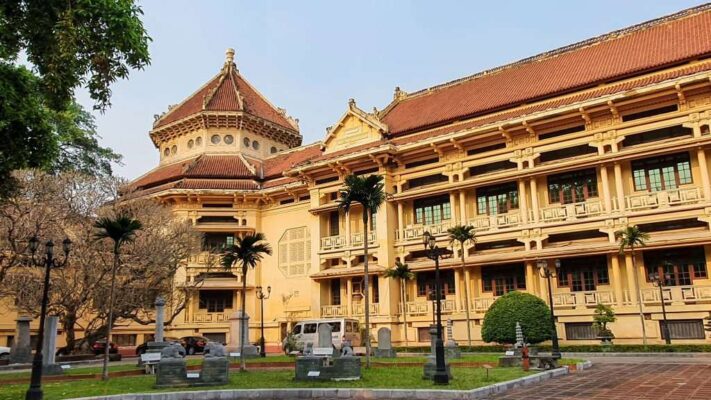
Vietnam National Museum Of History, constructed in 1925, originally served as a school during the French colonial era in Vietnam. The building itself presents an elegant blend of Chinese and French architectural styles.
Within the museum, visitors can explore a variety of fascinating exhibits, including bronze artifacts dating back to the 3rd century BC, which are associated with the Dong Son culture. Additionally, the museum houses a collection of Hindu statues from the ancient Champa and Khmer kingdoms, as well as galleries showcasing intricate Vietnamese jewelry.
Furthermore, there are dedicated galleries that delve into the history of the French colonial period and the Vietnam War, offering valuable insights into Vietnam’s past.
Tran Quoc Pagoda
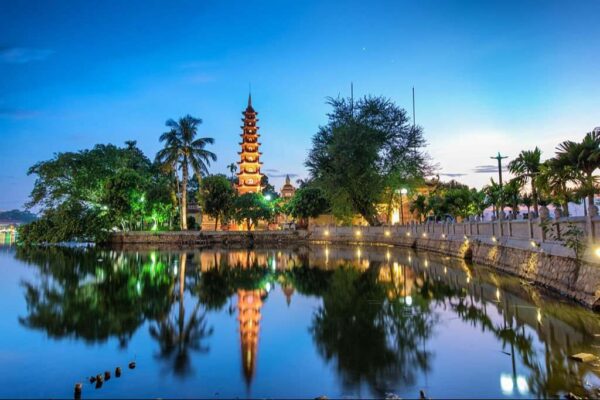
Tran Quoc Pagoda, Hanoi’s oldest Buddhist temple, traces its origins back to the 6th century. It is situated on an island within West Lake, requiring visitors to first cross an elegant bridge with the shimmering waters below.
From a distance, one can admire the 11-story Stupa Tower, which reaches a height of 15 meters (45 feet). However, a closer look reveals the pagoda’s intricate details, including the Amitabha Buddha statues housed inside. These statues are adorned with glistening gemstones, adding significance to this ancient and beautiful temple.
It is advisable for guests to dress conservatively when visiting Tran Quoc Pagoda.
Try the egg coffee at Giang Cafe
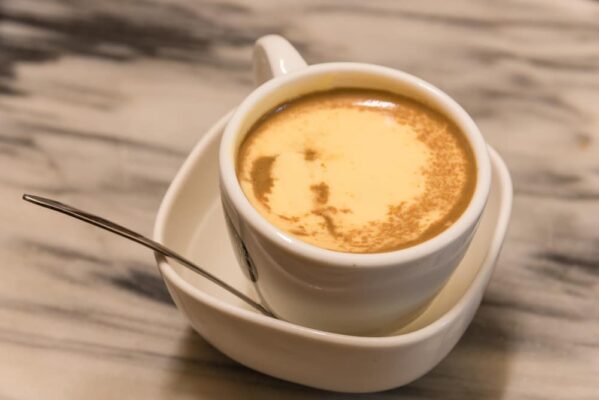
Hanoi is renowned for its egg coffee, a delightful treat that might not sound appealing at first but is surprisingly delicious. This unique coffee has a taste similar to eggnog, created by beating egg yolks with condensed milk until they become thick and fluffy.
The creamy mixture is then poured over a shot of traditional Vietnamese coffee, resulting in a smooth yet robust caffeine experience. To savor this specialty, one of the top spots in the city to try it is Giang Cafe, which has been serving this signature beverage for many years.
Accommodation: Where to Stay in Hanoi: Best Areas & Hotels
FAQs
Q: Is Hanoi a safe city for tourists?
A: Hanoi is generally safe for tourists, but it’s advisable to exercise the usual precautions and be mindful of your belongings.
Q: What is the best time to visit Hanoi?
A: The best time to visit Hanoi is during the cool and dry months from October to April.
Q: Do I need a visa to visit Vietnam?
A: It depends on your nationality. Many travelers to Vietnam require a visa, so check the requirements before your trip.
Q: Is it customary to tip in Hanoi?
A: Tipping is appreciated but not mandatory. It’s common to leave a small tip in restaurants and for tour guides.
Q: What should I wear when visiting temples in Hanoi?
A: Modest clothing that covers your shoulders and knees is respectful when visiting temples in Hanoi.

